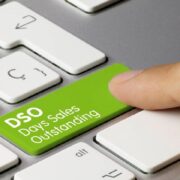Doing business in the retail or distribution space will have you looking at a lot of moving parts. It is not just about selling through what you have on the shelves. You have to think like a chess player and forecast how things are going to be several months in the future. Historical data will aid you in making sound decisions, but you also have to acknowledge the risks that you are taking.
Being prepared to incur some loss is part of the game. A lot of the problems could happen in the supply chain, and here are some ways on how to overcome them.
Returns and Defective Items
The number of your return material authorizations or RMAs falls under the loss column of your balance sheet. There are many reasons why people want to get refunds for the items they just bought. It could be that they are just not satisfied with the quality of the product, or they just straight out received something that is defective. That may sound like bad news for you, but there is still a chance for you to gather some revenue from those returned items.
You can establish a reliable reverse logistics program for your inventory which gives returned or defective products a new lease on life. This basically is turning losses into cash. The items have to be rebranded or put into a different category in your catalog. For example, even if the items were not opened or used at all, they have to go directly to the refurbished section. If you want to put a different spin on how to label it, feel free to do so. Just do not forget about being transparent about the true condition of the products.
Selling it directly to another business is another option. A lot of them like to be economical with their spending, and they also recognize that a lot of refurbished items are still of good quality. Give them a great deal on the goods and also offer a reasonable agreement. Do not push your luck too much on this one though. You will be lucky to get even with the sale, but do not be afraid to just go ahead and cut your losses.
Slow-Moving Inventory
There can be times when even if you market a product heavily, they just refuse to fly from the store shelves. Each day spent here is another day of lost relevance. Eventually, you have to accept the fact that people may not be as interested in the item as you had hoped.
One thing you can do to keep your inventory moving faster is to put a heavy price drop on those that have lingered there for a long time. Let them move from the main display shelves to the bargain bin. It may sound harsh but that is the reality of it. They are practically already paid for, and you should somehow recoup the cost of those goods.
Another thing you can do to increase some movement in your inventory is to pair the slow items with some top sellers. You should be able to bring down the price to the point where people will find a tough time deciding if they want to buy the hot item even if it is bundled with another. But they will most likely go for purchasing something that is bundled versus individual units.
Pricing
A product’s introductory price can be the key to its success or failure. If it is not positioned well, you may have a small window of time to correct its course. If you see that the market has given it a lukewarm reception, the first thing you can do is renegotiate terms with your supplier as soon as you can. Ask them if they can take back some stock that you have in your inventory, or you can talk about getting more discounts. These moves would ease the blow of a product’s poor performance.
You can also sweeten the deal between you and your supplier by talking about future orders. It is possible for them to deny adjustments to your current inventory since that is technically a closed deal already, but they should be more open to your next transactions. Give them a guarantee that you will be getting more products from them once you clear your inventory of the slow-moving product.
Since this is a give-and-take relationship, do not be afraid to go aggressive on asking for discounts on the items that are expected to sell well. You should also ask if they can give you price protection. This means that your new inventory will have flexibility on its pricing depending on what is out there on the market. If you have witnessed the product’s street price drop, you will be entitled to discounts even if your stock has been on your shelves for months.
Overstock
You may experience overestimating your order and then having too much stock in your inventory. If your recent transaction has not completed shipment yet, you should contact your supplier and ask to cancel or at least delay anything that is upcoming. For the latter, you can ask to push those out a few months into the future or have them replaced with a different product. If you are operating on multiple locations, assess each and hatch out an allocation plan. This will let you balance out the spread of quantities. This should give more stock to the sites that are projected to have increased demand.
A supply chain is a constant-moving machine. If there are hiccups encountered along the way, you have to be quick in resolving it. Time and your relationship with your suppliers are crucial factors in managing your inventory woes. So you need to have a close eye on the transactions and shipments and ask for assistance whenever you need it. Do what you need to so you can minimize or cut losses altogether and keep your operation running smoothly.
Meta title: Solving Your Supply Chain Woes
Meta desc: Managing a supply chain is like a balancing act. If ever you encounter any problems, here are some ways you can solve them.













Comments